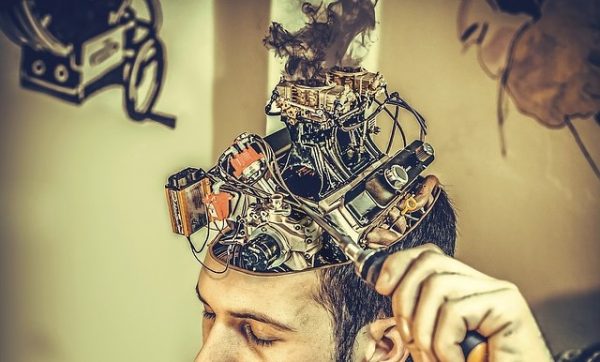
Experiencing the Moment with One Half of the Mind
As mentioned in my story, I had a tumor removed from my left temporal lobe. Before the tumor was surgically removed I experienced complex partial seizures isolated within the left hemisphere of my brain. During these one to two-minute complex partial seizures, I was unable to speak. It felt like I was entrapped within a dysfunctional mind. My silent, slurred, or illogical communication attempts during seizures were always frustrating and sometimes embarrassing.
The Wada Test
My neurosurgeon wanted to confirm that temporarily disabling the left hemisphere of my brain would indeed leave me unable to speak, and he also wanted to know if the right or left hemisphere of my brain was my primary memory operator. If the test concluded that the disabled brain hemisphere was important enough, a functional MRI would have also been performed before the surgery to ensure valuable parts of the brain were not removed. Of course, I wanted the functional MRI performed regardless of the primary memory location of my brain. Most of the time I would make a convincing argument against extreme practices for very little benefit. In this case my insurance deductible was already met, and this procedure, the Wada Test, sounded like an entertaining adventure.
The Adventure of Half of the Mind
A catheter was inserted into the femoral artery in my leg, and it was pushed all the way up to the internal carotid artery of my neck. It felt weird in my stomach area, but I couldn’t feel it move any further than that. However, I could see it through the computer screen showing an ongoing x-ray of my body. The catheter then released dye into my body which heated significantly as my body rejected the visitors. The x-ray clearly showed the dye map out all the veins in my left hemisphere.
My neuropsychologist prepared me for the memory test of random objects shown to me when the anesthetic would be released into my left hemisphere.
First as the anesthetic was being injected, I had both hands up wiggling my fingers and counting. At exactly 33 seconds I was unable to speak, and my right arm fell to the bed. As I was trying to say the number 34 I gazed at my right hand in awe as I tried to move it back to where it was originally. I was staring at it and expecting it to move where I wanted, but it wouldn’t move. My left hemisphere was undoubtedly numbed by the anesthetic.
Then the neuropsychologist started showing me the random objects. I was supposed to name them; however, I was unable to speak. Initially I thought my lack of speech was because I couldn’t think of the name of the object. I convinced myself I was just trying to remember the name before I said something. I would sometimes use filler words like umm, or uhh at times when I experienced partial seizures, or just couldn’t remember names. In this case I just couldn’t speak at all. The Wada test was like an extremely long and intense partial seizure. It felt like I was entrapped in a realistic dream where I was unable to speak. I was stuck with a goal that simply could not be accomplished.
He kept showing me the objects anyway. I was baffled by my inability to speak. In that moment I did feel confident that I knew the name for one or two things out of the fifteen. I also recognized all the objects, but the names for the others were just nowhere to be found. I was trying very hard to push the words out, but they just didn’t go. When I hear the word speechless, I think back to the Wada test experience and wonder how closely that relates to their word choice.
After about 15 minutes the anesthetic wore off. Since half of my brain wasn’t functioning it actually felt more like 2 minutes to me. He showed me the objects again. I knew immediately if I had seen them earlier, and I could clearly remember a snapshot of the moment he showed me each one. It was very relieving because it confirmed some functional immediate memory in my right hemisphere. This meant that all of my memory would not be lost as a result of the surgery.
What I learned about myself
Shutting down my left hemisphere with an anesthetic was similar to having an intense seizure in the left hemisphere of my brain. This was an interesting realization considering hyperactive neuron firing of a seizure is the opposite of the anesthetic numbing of the Wada test. The recovery process after a complex partial seizure was also similar to the recovery process my brain needed after the Wada test. I was able to experience the effect of a seizure within a controlled experiment.
This knowledge was valuable as I prepared for the upcoming surgery and dealt with my occasional seizures. Seizures were no longer a baffling annoyance and irritation; after this procedure the experience of a seizure evolved into more of an experimental data point. For the sake of my health I did everything I could to minimize the occurrence of seizures, but seizures became less of a fear. When the occasional seizure occurred, I was able to fully accept that moment in time. Rather than push to overcome the effect of the seizure, I learned to rest within the unaffected areas of my body until the seizure had quieted.
Have you experienced a challenging situation which lead to a peaceful realization? Please share in the comments below!